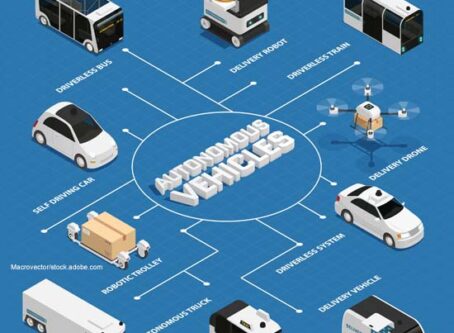Highway agency revamps self-driving car guidelines
One week after the House passed the Safely Ensuring Lives Future Deployment and Research in Vehicle Evolution Act, or SELF DRIVE Act, the U.S. Department of Transportation and the National Highway Traffic Safety Administration have released new federal guidelines for self-driving vehicles titled “Automated Driving Systems (ADS): A Vision for Safety 2.0.”
What is essentially a list of voluntary standards, the new federal guidelines attempt to speed up progress of autonomous vehicle technology by getting industry, state/local governments, safety/mobility advocates and the public all on the same page. A Vision for Safety 2.0 provides voluntary guidance of best practices for automakers, states and policymakers.
The voluntary guidelines for self-driving car manufacturers include 12 priority safety design elements based on research by NHTSA, the Transportation Research Board and universities. Guidelines apply to vehicles under NHTSA’s jurisdiction that are Society of Automotive Engineers Automation Levels 3-5:
- Level 3 (Conditional Automation): Driver is a necessity but is not required to monitor the environment. The driver must be ready to take control of the vehicle at all times with notice.
- Level 4 (High Automation): The vehicle is capable of performing all driving functions under certain conditions. The driver may have the option to control the vehicle.
- Level 5 (Full Automation): The vehicle is capable of performing all driving functions under all conditions. The driver may have the option to control the vehicle.
Since interstate motor carriers and commercial vehicles fall under the Federal Motor Carrier Safety Administration, the self-driving guidelines do not apply to trucks. Federal Motor Carrier Safety Regulations require a trained driver behind the wheel at all times, regardless of autonomous technology within the vehicle.
NHTSA encourages self-driving automakers to have a documented process for the assessment, testing and validation of the following elements:
- System safety – design free of unreasonable safety risks on par with standards of traditional vehicles.
- Operational design domain – description of specific conditions under which an autonomous vehicle or feature is intended to function.
- Object/event detection and response.
- Fallback (minimal risk condition) – transition to a minimal risk condition when a problem is encountered or the self-driving vehicle cannot operate safely.
- Validation methods – tests demonstrating behavioral competencies, performance during crash avoidance events and performance of fallback strategies.
- Human machine interface – understand the interaction between the vehicle and the driver, including various indicators and notifications.
- Cybersecurity.
- Crashworthiness – protection of occupants during a crash.
- Post-crash automated driving system behavior – return to safety after a crash, including shutting off of fuel pump, removing motive power, etc.
- Data recording.
- Consumer education and training.
- Federal, state and local laws – documentation of how stakeholders intend to account for all applicable laws in the design of vehicles and automated driving systems.
Self-driving systems are intended to encourage new entrants and ideas to the market that will lead to safer vehicles. Furthermore, the guidelines will make the regulatory process more conducive to keeping up with the private sector.
Again, these guidelines are completely voluntary. Automakers and other stakeholders are not required to submit a Voluntary Safety Self-Assessment, nor is there any mechanism to compel entities to do so.
“While these assessments are encouraged prior to testing and deployment, NHTSA does not require that entities provide disclosures nor are they required to delay testing or deployment,” according to the guidelines. “Assessments are not subject to federal approval.”
On the government end, NHTSA tries to define the roles between the federal and state governments because they often have conflicting ideas on how to regulate automated driving systems. Essentially, NHTSA will control safety standards, compliance enforcement, recalls and public outreach while the states maintain control of licensing, traffic law enforcement, safety inspections and insurance regulations.
NHTSA is also strongly encouraging states to not codify the voluntary self-driving guidelines, giving the federal government the overreaching power of regulation to prevent conflicting laws between the feds and the states.
At about this same time last year, the U.S. DOT introduced the first version of its automated vehicle policy. A Vision for Safety 2.0 expands on that policy by using feedback from public comments and Congressional hearings. NHTSA and the U.S. DOT are already in the early stages of the third version of guidelines.









